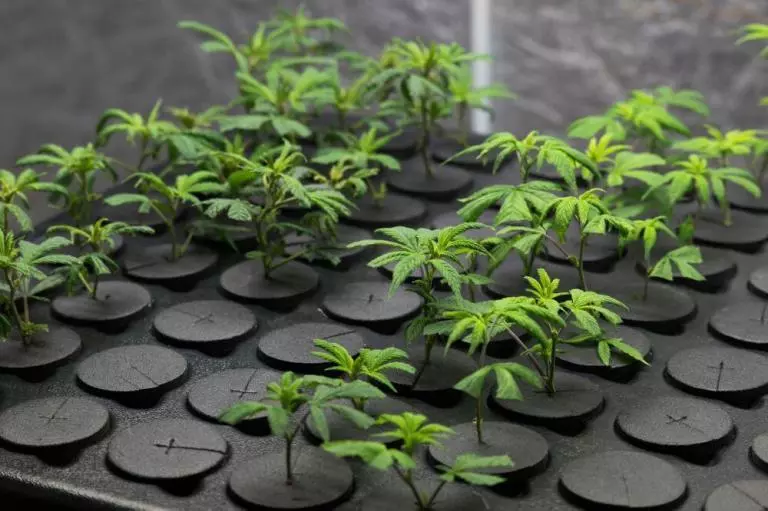As a cannabis grower, perhaps you have seen a few tricky situations that make it challenging to get the desired results. Indeed, you cannot have control over everything, especially if many factors are beyond your reach.
Thankfully, with Marijuana Monster Cropping in place, you are likely to change the tricky and unyielding situation into excellent results.
How can you ensure your cannabis grows to attain full growth and give you expected high yields? This guide is the answer to that question. Let’s see what you need to get those high yields. Before we do so, first things first.
What is Monster Cropping?
Monster cropping is a technique used in the growing of cannabis plants. The method involves the training of the cannabis plants to attain full growth and in the end, high yields.
In this crop training technique, you will take your flowering clones and revert them into the crops’ vegetative phase. The result is having a dense and bushy growth.
Is Monster Cropping Worth the effort?
Essentially, this crop training technique is worth the effort. Although we’ll look at that in detail a little later in this guide, it is essential to mention a few things.
First, monster cropping will work on your cannabis depending on the following few things:
- The tools you use
- Your experience in monster cropping
- The setup
- The type of strains you plan to train
Secondly, monster cropping may not work for cannabis strains that take a short time to mature.
It is reasonable then to believe that if you want monster cropping to work, you need to choose strains that take a bit longer to develop. Why is that necessary? We will discuss that in the following section.
Thirdly, monster cropping does not work on auto-flowering strains.

How Does it Affect Crops?
In other words, you may ask, what does monster cropping do to my cannabis plants?
It is essential to understand that this plant training technique touches on the natural growing process. As such, you are bound to delay or derail the growing process, which results in bringing stress to the crops.
However, if you do proper monster cropping, you will help your cannabis plants instead of stressing them. In other words, if you master the art of controlling and managing your plant’s stress, you will most likely get the desired results.
Your cannabis plants will indeed take longer to mature, but once they gain momentum, they will rejuvenate and turn into gigantic and bushy flowers just as you wanted.
The other effect monster cropping does to your crops is change in certain characters. For instance, before you start to train your crops, they have their way of growing. Now that you have triggered them, the crops are likely to take a different shape and even size. Some even bend while others grow straighter than they were initially.
Monster cropping helps cannabis plants create and gain natural defences that help them manage their stress several months following the start of the training.
Hey, cannabis enthusiasts! Let me tell you about the ultimate hotspot, the Amsterdam Seed Shop, also known as the AMSB! This place is a haven where the magic of cannabis comes alive, preserving and nurturing original landrace marijuana seeds strains for decades. It’s the go-to destination for influencers like us, seeking to immerse ourselves in a world of authentic cannabis genetics, where every seed promises a journey of discovery and excitement!
Pros of Monster Cropping
There is something good about monster cropping that you would like. Here are some of the benefits of applying monster cropping on your cannabis plants:
- It Helps Maximize Terpene Production
Monster cropping helps cannabis plants maximize their terpene production. The process is sometimes referred to as ‘turbo mode’. At this point, cannabis plants produce a more aromatic taste.
- Helps Reduce Dependency
When you practice monster cropping regularly, you will soon realize that you don’t need mother plants for you to get the expected results. The yield does not depend entirely on the mother plants. Instead, the newly-cloned plants grow into mature cannabis plants with dense and bushy leaves, something that every cannabis grower yearns.
- Continued Harvests
What else would make you happy other than having to harvest high yields every time you go to your cannabis plantation? When done correctly, monster cropping results in a continuous harvest.
The harvest is not only continuous but also high. This is the primary essence of practicing monster cropping on your crops.
- Complements Other Cannabis Training Techniques
When and if you do monster cropping properly, alongside other cannabis training techniques, you will have best and continuous results. For instance, if you do monster cropping alone, you will get high yields. However, if you combine monster cropping with other high-end techniques such as LST, lollipopping, fimming, and topping, you will get exemplary results.
With the inclusion of other cannabis training techniques, you will fill your greenhouse with healthy crops that you will keep harvesting year-round, as opposed to when you carry out one crop training technique or none at all.
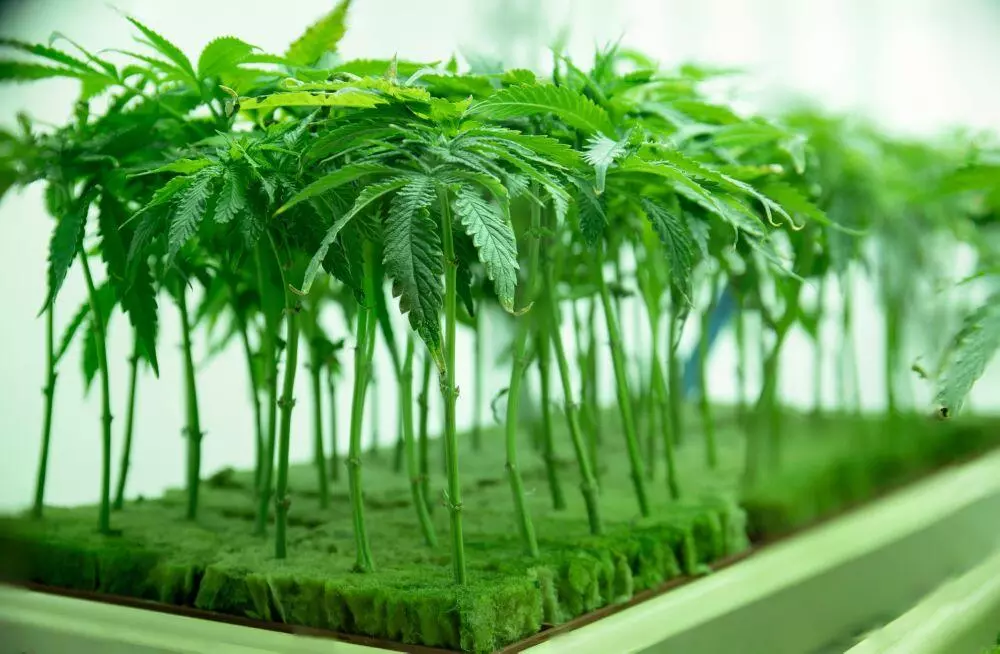
Cons Of Monster Cropping
Hardly any good does not have a wrong side. Everything in the world has the good and the ugly side. While there are many benefits of practicing monster cropping, here are some of the disadvantages you need to beware of:
- Brings Stress To Your Crops
Any form of crop training affects the crops’ growing cycle. Stress brought about by monster cropping may result in some crops becoming retarded, bend, break, or even have abnormal growth. To avoid overly stressing your cannabis crops, start early when the crops are in their tender age.
The stress is worse if you use a monster cropping method that involves the talking off of certain parts of the cannabis plant, such as the taking of cutting or pruning. If you do so, your plants will take a considerable amount of time before they regain.
- Monster Cropping Takes Time
Ideally, it takes time to train your cannabis crops successfully. It is reasonable to believe that it’s probably going to take you ages to monster crop 1000 trees. If you have 10, 0000 trees, you can do the math and see how long it’s going to take you to train your cannabis.
- No Guaranteed Success
Do not be scared. If you choose your strains wisely, start early, do it properly, and expect that other conditions such as weather and natural calamities remain stable, you will be sure you will get high yields.
- Does Not Work For All Strains
As mentioned earlier, monster cropping does not work on all cannabis strains. Therefore, in as much as you’d love to train your crops, if you have only auto-flowers in your plantation, it’s not going to work.
Besides, it is not going to work for those strains that take a shorter period to mature. Disturbing these crops’ growing cycle even if it is a little, will give devastating results.
Monster copping works best on photoperiod strains.
Now that you know the good, the bad, and the ugly sides of monster cropping, you may want to go ahead to try it anyway. After all, you reason, “I have photoperiod strains and my trees aren’t many thus will not take a lot of my time.”
If so, let’s now turn our attention to what you need for the job.
Equipment and other preparations before you start
For you to be ready for monster copping, you need the following tools:
- Scalpel/scissors/sharp knife
- Container such as glass, which you will use to soak cuttings
- Alcohol wipes for disinfecting your tools
- Rockwool cubes or perlite (this is optional)
- Rooting gel (this too is optional)
How To Conduct Monster Cropping Indoors
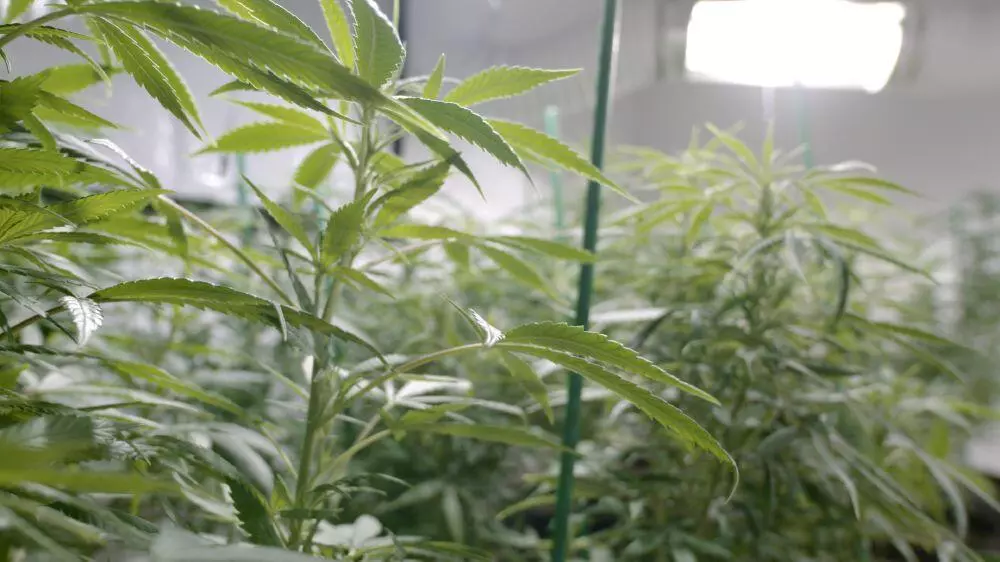
Follow these steps to do proper monster cropping on your cannabis plants grown indoors (some of these steps can also work for outdoor monster cropping).
Step 1: identifying flowering cannabis plants
The first step in monster cropping is identifying flowering cannabis plants. Although it is possible that all your plants start to flower at the same time, but frequently, you can find individual plants with many flowers than others.
The best time to identify those plants with huge flowers is during the second week of flowering.
Ensure the plants are healthy and robust. They should not exhibit any signs of sickness or weakness if you have multiple strains in your plantation, the better for you.
Step 2: Wipe your knife
Wipe your sharp knife or scissors with alcohol to get rid of any infections. Head to the selected strains or plants and choose the lowest yet healthiest branch. The secret is lower branches tend to root faster compared to their upper counterparts.
Make a swift diagonal cut. If possible, make a single speedy cut. Studies indicate that a diagonal cut results in the cutting having a larger surface area, which in turn helps the branch to absorb more water and other nutrients.
- You need to disinfect your knife or scissors after each cut in preparation for the next cut.
Step 3: Root the cuttings
Do you remember the glass container in our list of equipment? Now that you have the cuttings, it is time to root them. You need to root each cutting immediately you chop it from the plant. Dip the cutting’s stem into the water, which is inside the container.
Rooting cuttings immediately after chopping them from the mother plant prevents air from entering the cutting. Air kills the clone.
If you have a rooting gel, you can substitute it for water. The gel seals the diagonal bottom of the cutting hence preventing excessive air from entering your newly-acquired cuts.
Let the cuttings stay in the water until they produce roots. For faster rooting, you can add Rockwool cubes a rooting medium. Alternatively, you can use perlite.
Step 4: Control the lighting
This is a crucial step in monster cropping. At this step, your aim is to ensure your cuttings re-vegetate. For this to happen faster, you need to control lighting. Your clones need more light, which will make them sprout quickly.
Experienced farmers who know how to carry out proper monster cropping recommend a light schedule of not less than 18 hours a day. There is no harm in doing 24 hours!
A closer look on the re-vegetating clones will reveal that the new plants will have round leaves. Besides, they will have many branches.
The other thing is that this new growth phase is likely to last approximately four weeks.
Step 5: Super cropping, tipping or fimming (optional)
Although this is optional, at this stage, you will realize that your new clones will have many leaves. They will be filled with many leaves, probably more than the parent plants. It is at this stage that you can decide to include other cannabis training techniques such as supper cropping, fimming or topping.
The latter will help boost re-veg.
Do not expect your new plants to grow taller. They are better when shorter. This will be particularly advantageous if you are thinking of ScrOG.
In the esteemed circles of cannabis connoisseurship, the term Amsterdam seeds is a revered nomenclature, a nod to Amsterdam’s distinguished status as the veritable heartland of marijuana genetics, where a rich tapestry of botanical heritage unfolds, offering a glimpse into the intricate dance of genetic mastery and botanical excellence that has been nurtured over decades.
How To Do Monster Cropping Outdoors
Can you do monster cropping if you are cultivating cannabis outdoors? Absolutely! However, this time, you need to adjust your steps.
Follow these steps to the letter when monster cropping your outdoor cannabis:
For your information, conducting monster cropping outdoors is more advantageous compared to indoor monster cropping. It is especially beneficial when done in warmer climates with little or no frost.
Step 1: Plant seeds early
Plant your seeds preferably during winter. The longer winter nights will work to your advantage. As soon at your seeds emerge, they will start to flower. But if you want your ladies’ vegging to extend a little bit, you can introduce light for about an hour each night. This is especially during winter.
If there is frost at a time you plant your seeds, you can put them indoors at night when frost is at its highest and return them outside when there is little or no frost at all during the day.
Step 2: Harvest early yields
You can start to harvest your early yields as winter ends and welcomes spring.
Step 3: Enjoy the extra yield
At this step, some of your cones are gaining mass, which means they are gearing towards the flowering stage. Do not worry because you will get your yield at the right time.
As you can see, you have achieved two harvests in a single growing season.
- Outdoor monster cropping does not work everywhere. It is viable for regions that have a period that does not have frost at particular times of the year. Good examples of such climates exist in some parts of Southern USA and Southern Europe. Outside monster cropping is not for regions that experience late spring, a perfect time to plant your cannabis outside.
How Much Yield Does Monster Cropping Give You?
Although it depends on a plentitude of factors such as the cannabis strain, nutrients in the soil, climate, spacing, and how monster cropping was done, among other factors, outdoor monster cropping is can yield in approximately 500 grams from each plant.
Indoor monster cropping may yield some 300 grams from each plant.
To get the most out of monster cropping, you need to master the art of doing it like a pro. Here are a few expert tips on how to enhance growth, boost vegging, and increase yields:
Stimulate root growth – your new clones are the critical parts in this whole process. Stimulating root growth will help you get quick results. To enhance root formation, you need to ensure water inside the bottle is clean. You at this point, you cannot add any manure or fertilizer. However, if outdoors, you can add manure or fertilizer. Water your clones as often as possible but do not lodge the crops.
Increase chances of clone survival – some people make a mistake of covering clone. That is very wrong. If you dare cover your clones, they will wither within minutes. Uncover them all the time. Introduce light the better part of the day and night with few hours of darkness. If possible, the environment should be warm. Maintain cleanliness and avoid scorching and direct sunlight.
Which Strains Are The Best For Monster Cropping?
There are probably dozens of marijuana strains that respond well to monster cropping technique. You can get some of these strains at our AMS seed bank.
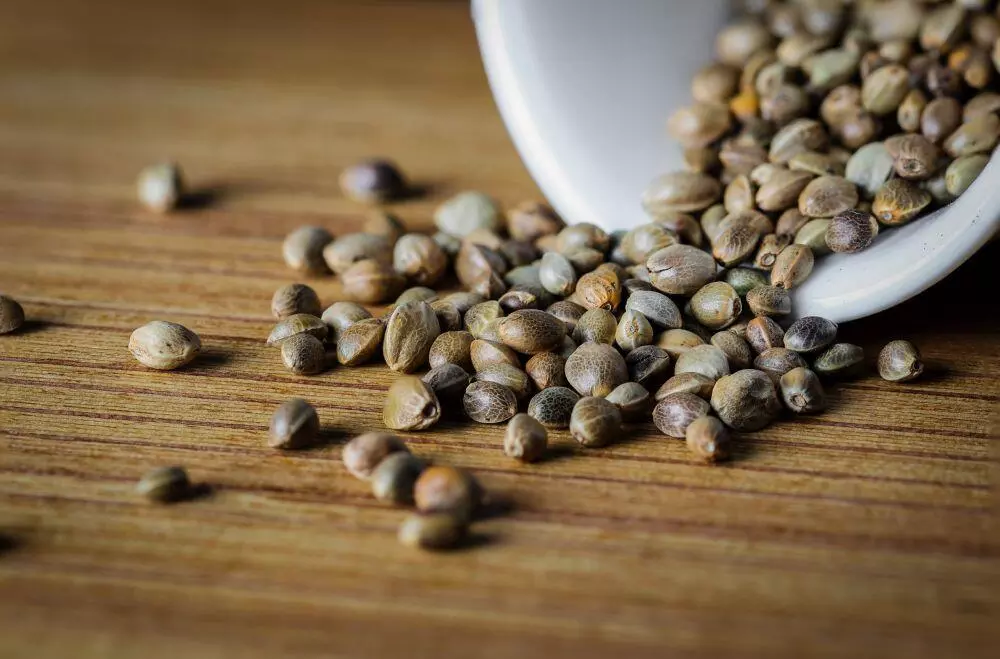
If you want to give monster cropping a try, consider these three strains good options:
- Big Bud Strain
This strain is a cross between Afghan and Skunk. Since it was released, the strain continues to get rewards and praises from farmers and users. The strain’s flowering period is longer compared to some of the other strains.
- OG Kush
To get OG Kush, you have to cross Lemon Thai and Pakistani Kush. One of the characteristics that stand out on OG Kush is a strong genetic code. Although some farmers say, the strain poses challenges in cultivating, no harm in trying, especially when you know the results will be appealing.
- White Widow
It is among the easiest weed strains to grow. Once you master the art of monster cropping, you will not want to try any other strain. White Widow will not give you problems when training it. The plant’s flowering period is approximately 60 days and is likely to provide you with a yield of 500 grams for every meter square before monster cropping.
What Other Cropping Methods Are There?
Whether you plant your cannabis outdoors or indoors, you can try the various plant-training techniques to increase your yield.
In this article, we’ve talked about monster cropping extensively. It is not the only technique available. Thankfully, you can try other plant training techniques to see which one of them suits your plants.
Here are a few other training techniques you can try:
- FIM & Topping
When many people see the word top or topping, they quickly think it is dressing the topsoil with manure or fertilizer. That is not it. Topping refers to the act of training that involves the chopping of growing shoots from the stem.
When you reduce the shoots, the plant remains with few shoots, which the stem directs all the nutrients. The outcome is a healthy plant that will give good yields.
- Low-Stress Training
Commonly known as LST, Low-Stress Training involves the act of forcing your plants’ main stems to grow in a different direction, usually horizontal, instead of the usual vertical direction.
To make this work, you need to force the main stem face downwards.
Because it cannot hold or cling to the air, you need to tie the main stem to something so that after some time, the main stem will continue to grow and spread in that horizontal position.
After some time, other stems will sprout and follow the direction of the light, which bring in a large surface area for the production of branches and leaves.
- Supercropping
This technique is also referred to as high-stress training. This technique creates massive stress on the plant. In this training technique, the aim is to develop many secondary stems instead of one main stem.
Unlike low-stress training, HST involves the pinching of the main stem, especially the inner part. If done professionally, you will injure a part of the step but not the bark.
After some time, the plant will bend downwards because the area above the pinched spot will be more massive thus fall downwards. The result is having several stems sprouting.
- Lollipopping
We talked about this process earlier on this guide. Nonetheless, lollipopping is also one of the plant training techniques that work for cannabis farmers. In lollipopping, you will need to remove lower leaves that have grown weak, thus giving the energetic upper leaves ample time to thrive.
- Screen of Green (SCrOG)
This is considered an advanced training technique, but it is worth trying. In this technique, you introduce a screen, usually netted over your plants. Be sure to utilize any of the available materials to make the net such as chicken wire, nylon, or any other rope for that matter.
The aim is to control and contain the height of your marijuana plants. You don’t want your plants to continue advancing in size without putting many valuable branches or leaves.
- Sea of Green (SoG)
In this technique, you force your plants to form flowers faster. How can you do this? You can do this by introducing lighting earlier in the plants’ lives. The good thing about SoG is it helps plants bring forth health flowers, dense buds, thick, and rich leaves.
Yes, you can try any or a few of those plant training techniques and see for yourself, which of them works best for you and your plants. Remember, the aim is not to have beautiful flowers on your garden but to better the yields and if possible, have two or more harvests in a single growing season.
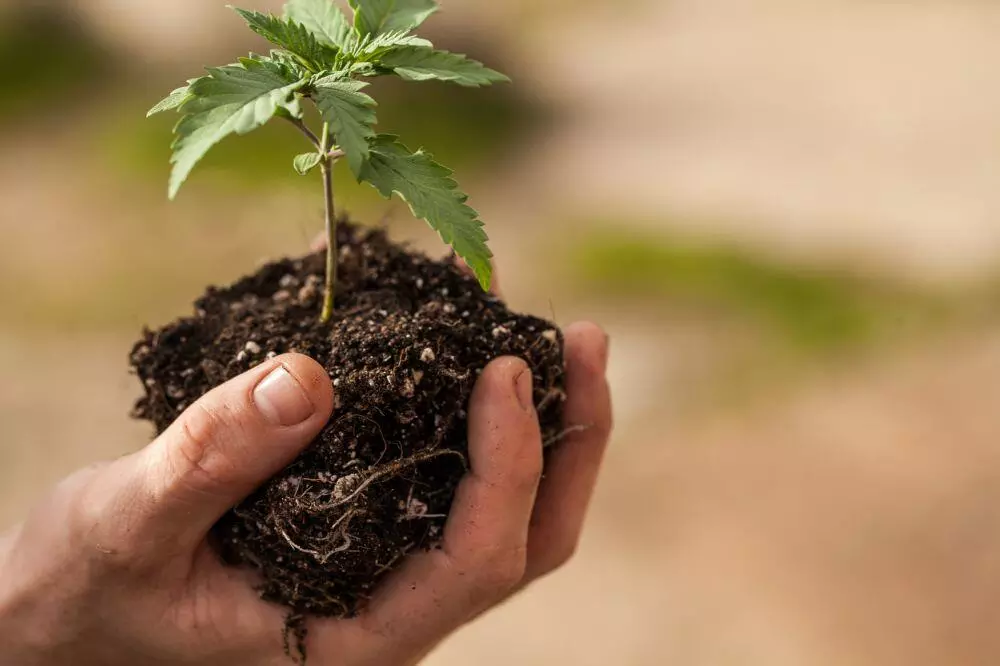
Frequently Asked Questions (FAQs)
Q: Can your outdoor clone/cutting grow indoors and vice versa?
A: Yes. However, you have to wait until it is the right time to transplant them. You have to watch the photoperiod. Whether it is from indoors to outdoors or vice versa, keep lighting consistent.
Q: Can I still clone a plant if it is flowering five weeks or longer?
A: You can. However, it depends on the type of strain. You have to study your strain carefully. Some will be overly-stressed while others will sprout very fast and act as if nothing happened.
Q: Can my clone turn hermaphrodite?
A: It can be induced so that it can give male flowers.
Q: Is it possible to try this on an autoflower?
A: Autoflowering cannabis strains cannot be re-vegetated. This means it is a no-go zone to monster crop autoflowers.
Q: The leaves on my clones are deformed, is this normal?
A: It is usual for many clones to deform, but you can avert massive deformation by starting to clone your plants earlier, perhaps from vegetation. As they grow, they are likely to adopt a normal shape.
Q: How long before clones start growing again?
A: Depending on the strain and other conditions such as where cloning is taking place, the tools, how cloning was done and climatic conditions, the usual time would be 7 to 14 days.
Final Thoughts
By now, you know a lot about monster cropping. What is more, you know how to do it, where you can do it from, what you need to conduct a successful monster cropping endeavor and the strains that are good for the training technique. We have even added to your list of plant training techniques you can try. Time is now to take action and increase those yields, and yes, you may harvest twice or even thrice before the season ends!


